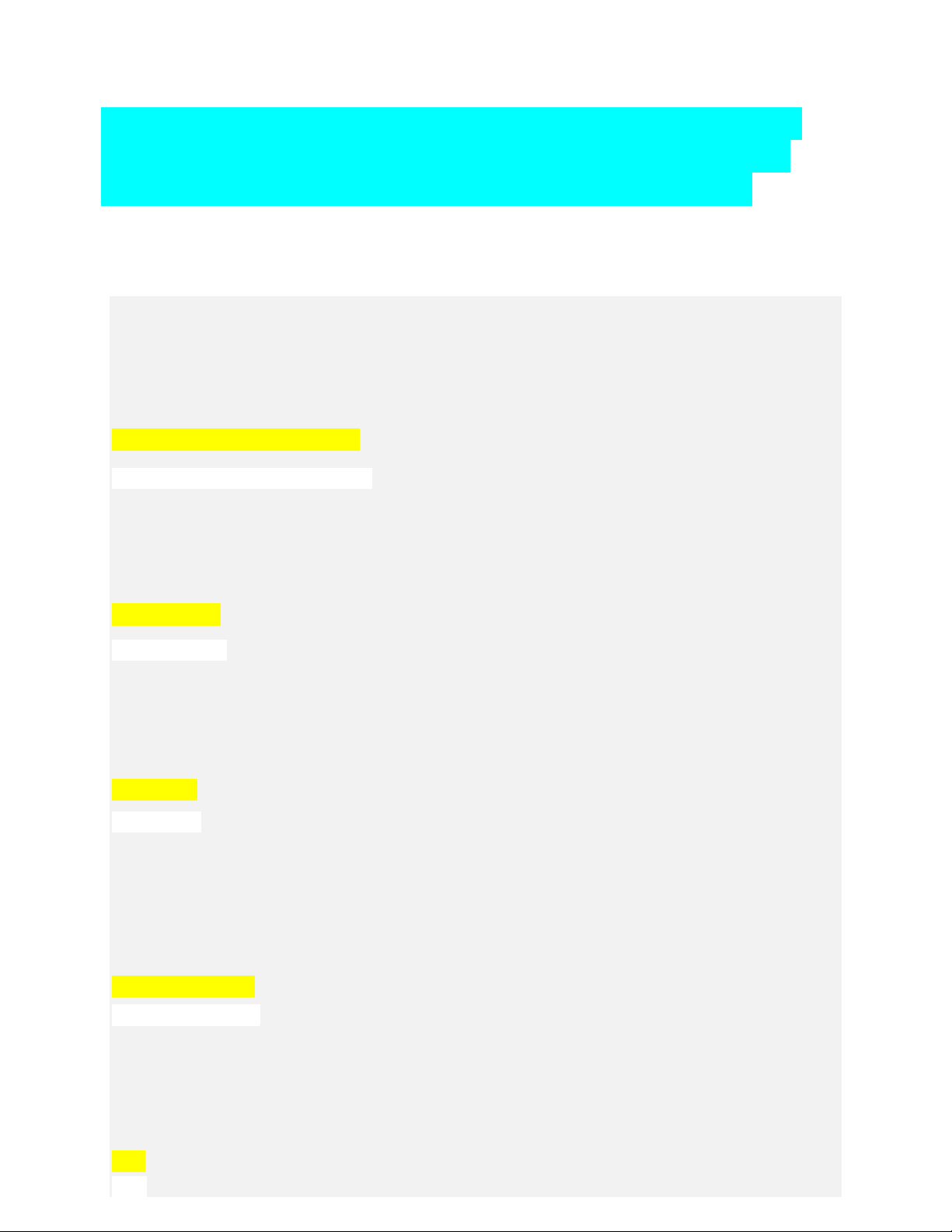
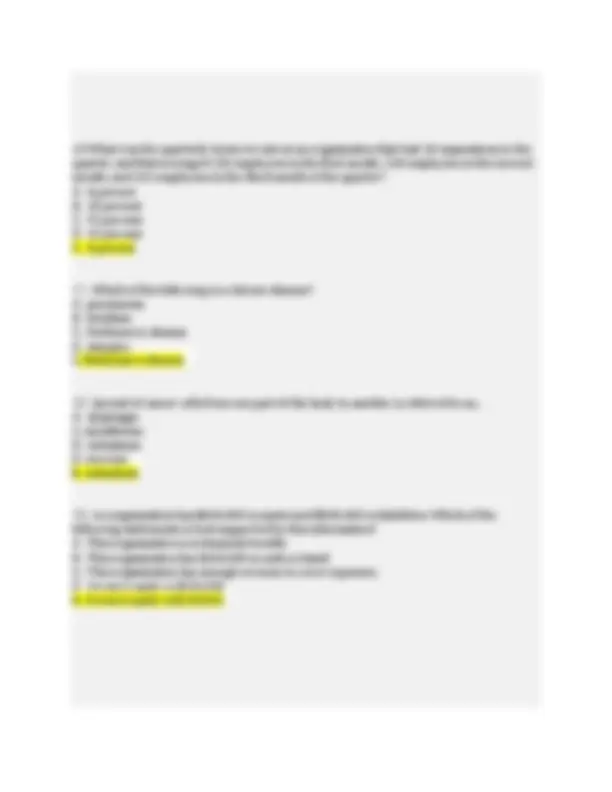
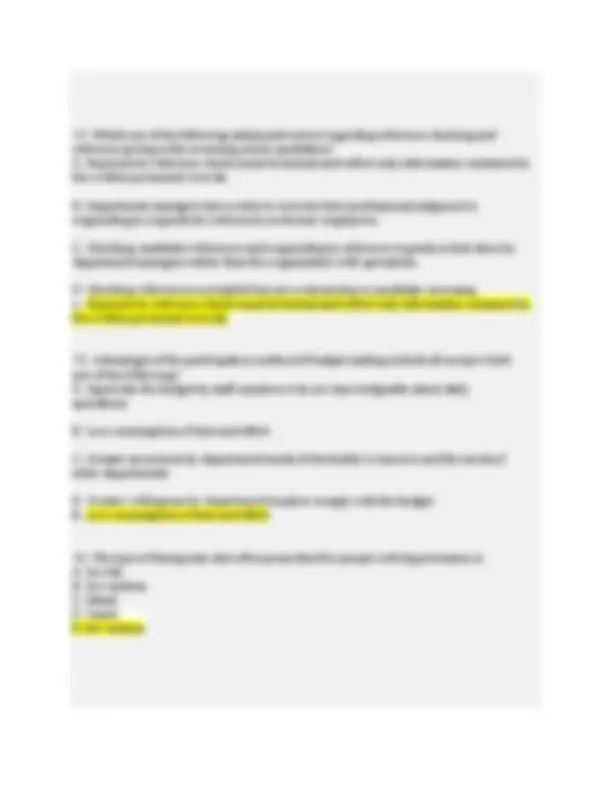
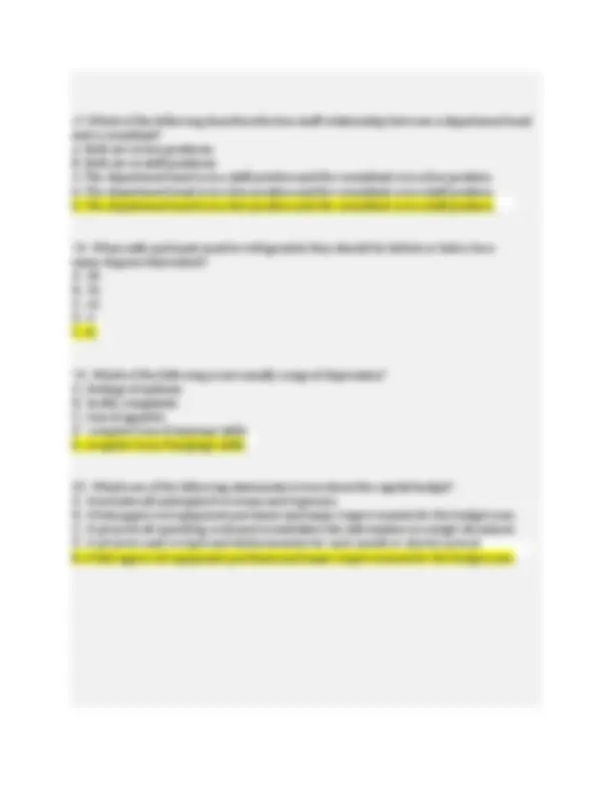
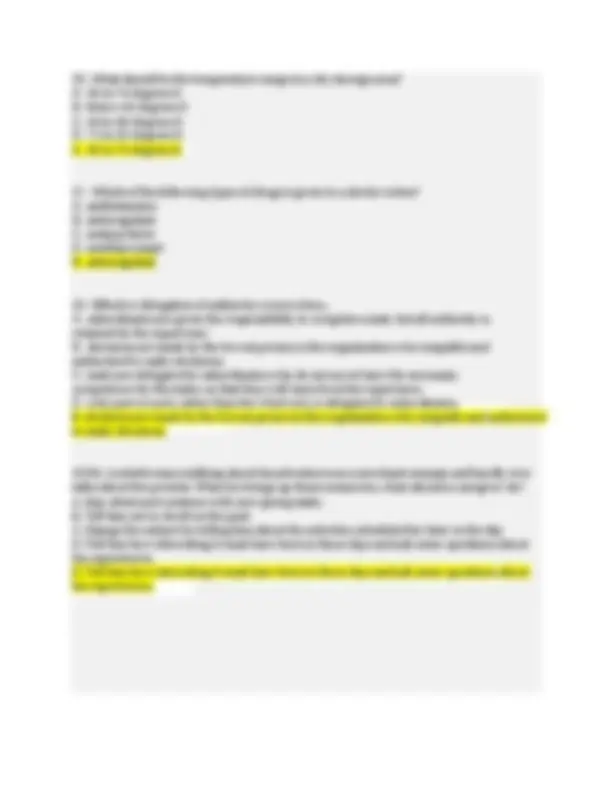
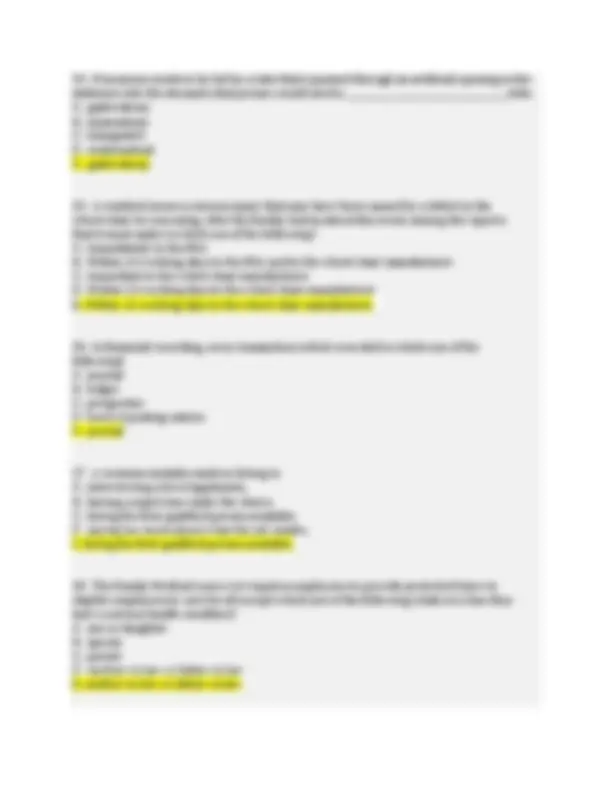
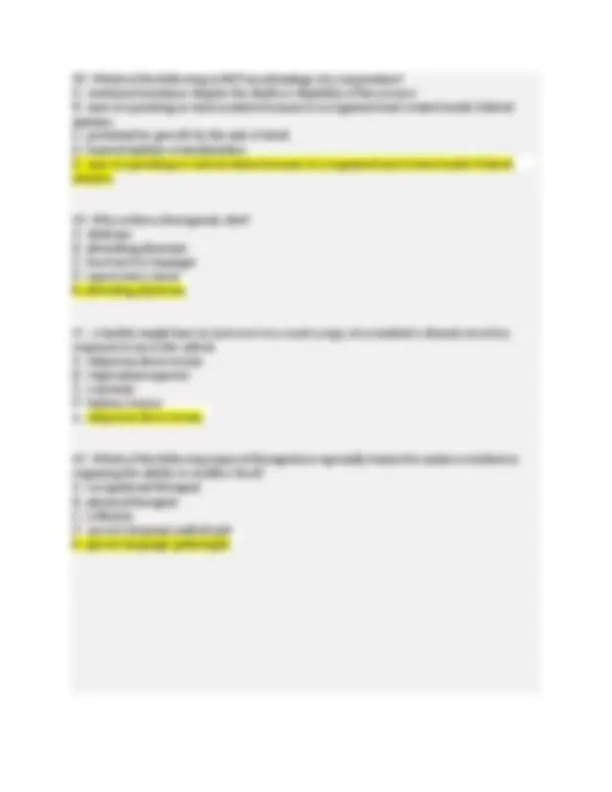
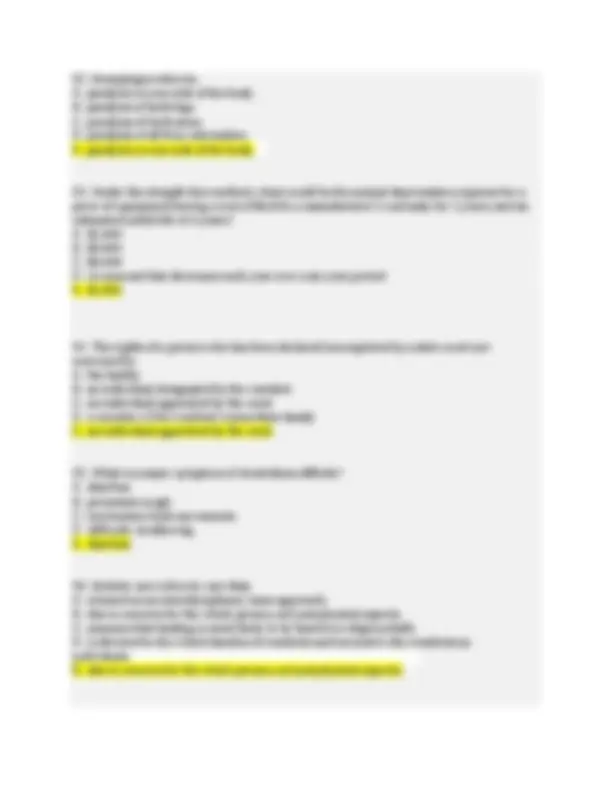
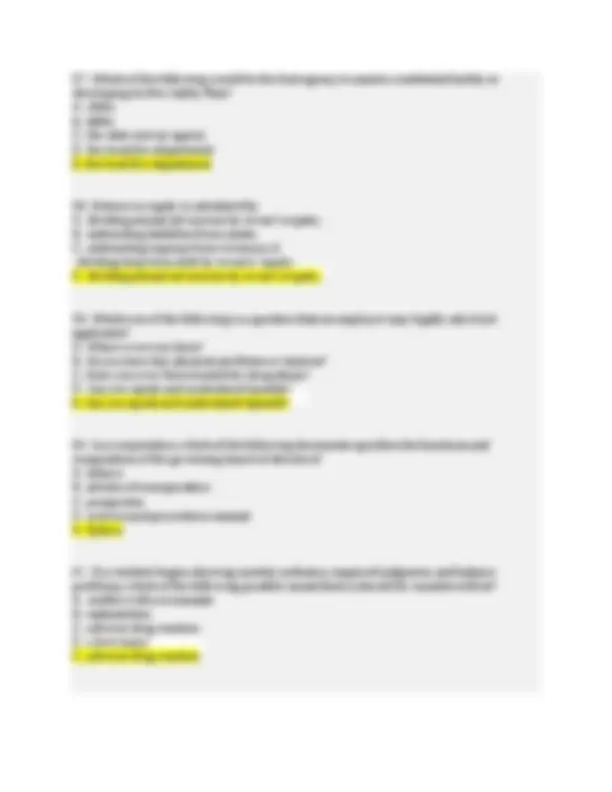

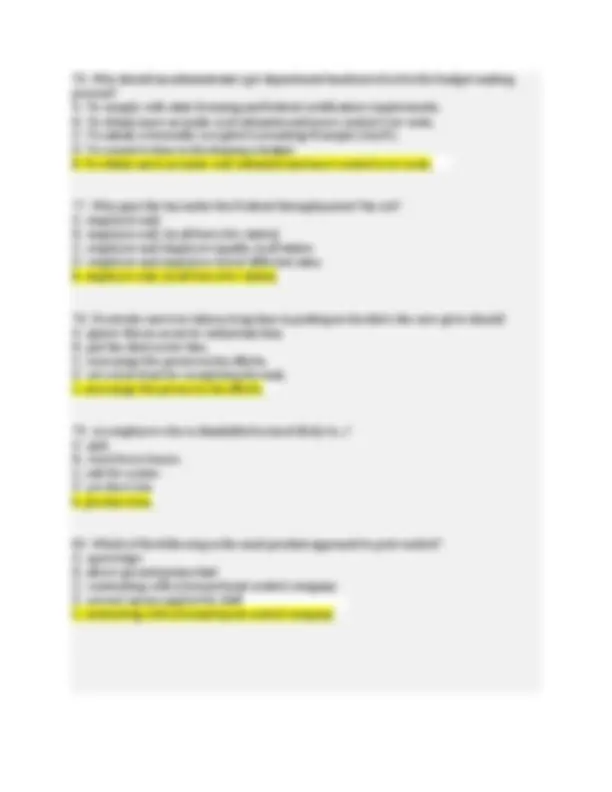
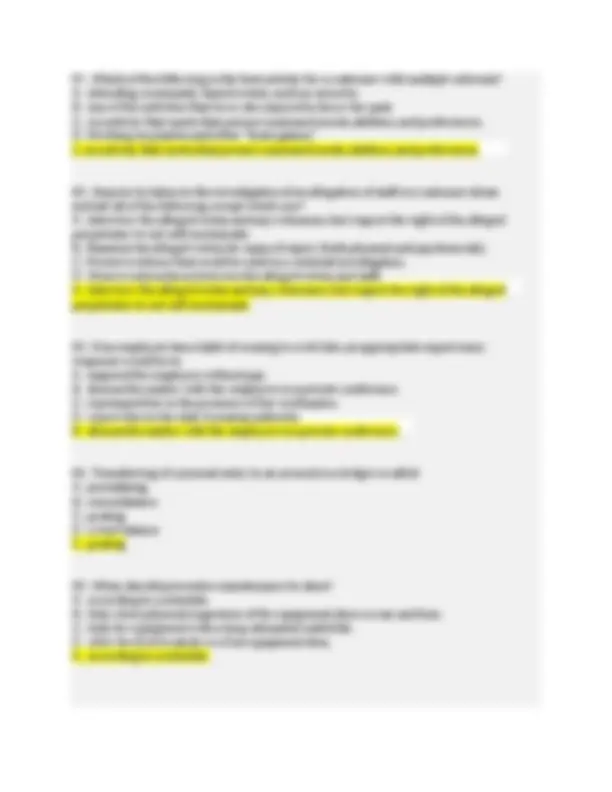

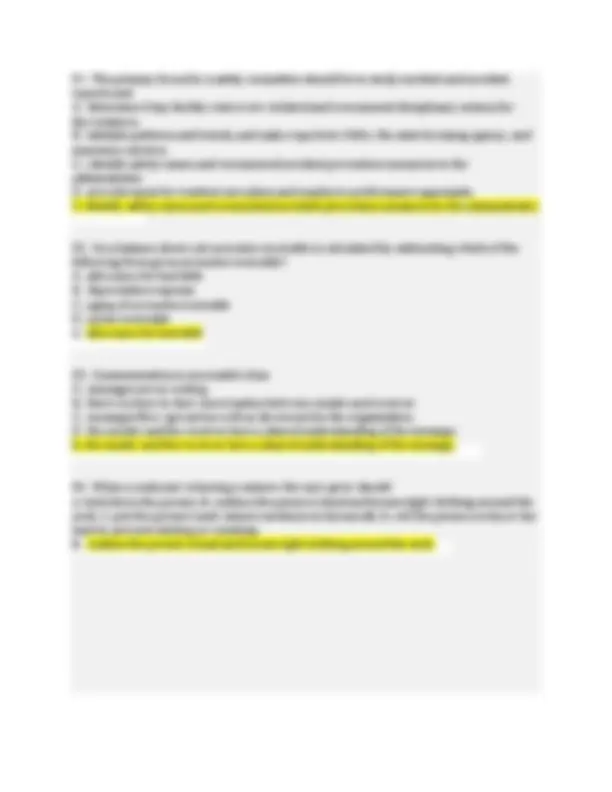
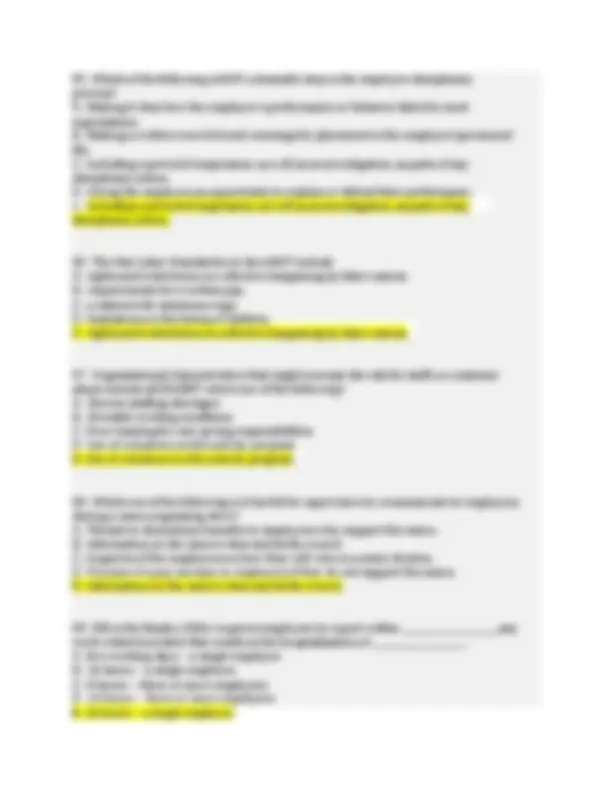
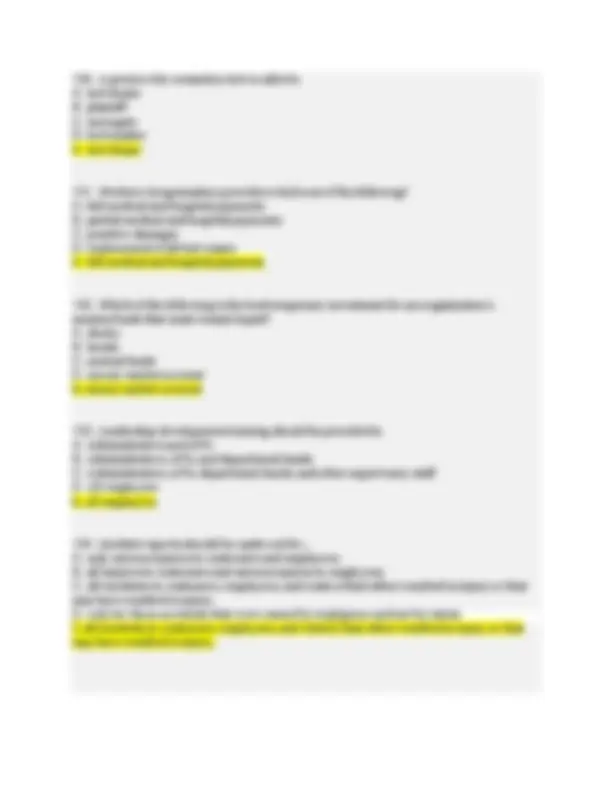
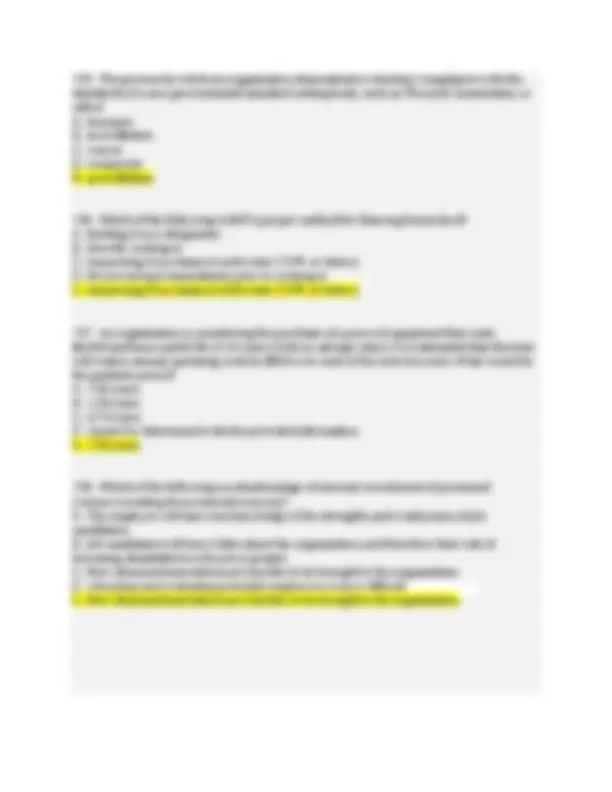
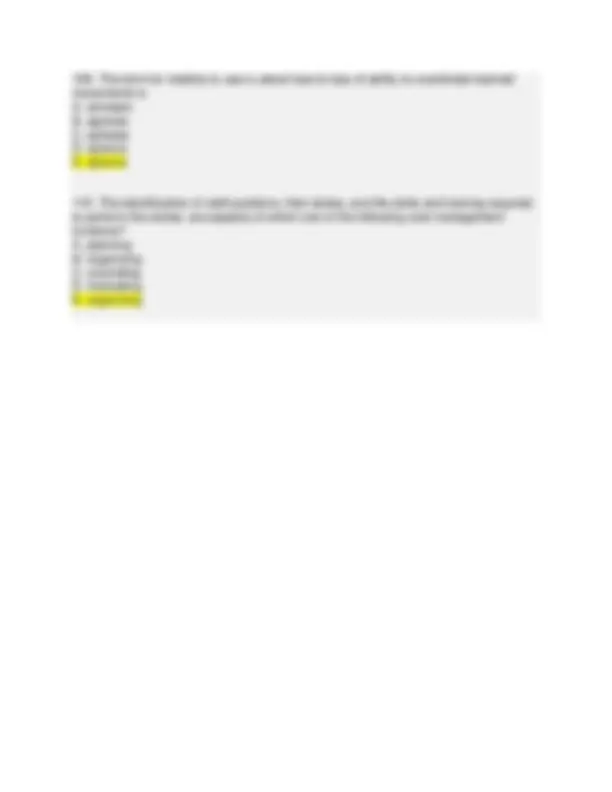


Study with the several resources on Docsity

Earn points by helping other students or get them with a premium plan


Prepare for your exams
Study with the several resources on Docsity

Earn points to download
Earn points by helping other students or get them with a premium plan
Community
Ask the community for help and clear up your study doubts
Discover the best universities in your country according to Docsity users
Free resources
Download our free guides on studying techniques, anxiety management strategies, and thesis advice from Docsity tutors
2025 NAB CORE PRACTICE EXAM ACTUAL EXAM WITH 110 QUESTIONS AND 100% CORRECT DETAILED AND VERIFIED ANSWERS.A+ GRADE (TOP SCORE EXAM)
Typology: Exams
1 / 25

This page cannot be seen from the preview
Don't miss anything!


















17 Which of the following describes the line-staff relationship between a department head and a consultant? A. Both are in line positions. B. Both are in staff positions. C. The department head is in a staff position and the consultant is in a line position. D. The department head is in a line position and the consultant is in a staff position. D. The department head is in a line position and the consultant is in a staff position.